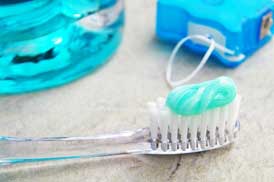Fluoride has been and continues to be a hot topic in the field of dentistry. Despite all the information available regarding the benefits and  risks of fluoride use there still seems to be a large amount of misinformation about this topic.
Fluoridation of the water system has been recommended by numerous health organizations, most notably the CDC and WHO have long supported the dental benefits of fluoride.
The CDC has stated that: “For 65 years, community water fluoridation has been a safe and healthy way to effectively prevent tooth decay. CDC has recognized water fluoridation as one of 10 great public health achievements of the 20th century.” And, the World Health Organization explained that: “Public health actions are needed to provide sufficient fluoride intake in areas where this is lacking, so as to minimize tooth decay.”
As a dentist I do believe that fluoride is a great tool to use to help prevent tooth decay. In our practice we frequently recommend fluoride products for adults and children alike. And, with my recommendations I have encountered many questions about fluoride, such as where does it come from, how much am I getting and how much do I need?
risks of fluoride use there still seems to be a large amount of misinformation about this topic.
Fluoridation of the water system has been recommended by numerous health organizations, most notably the CDC and WHO have long supported the dental benefits of fluoride.
The CDC has stated that: “For 65 years, community water fluoridation has been a safe and healthy way to effectively prevent tooth decay. CDC has recognized water fluoridation as one of 10 great public health achievements of the 20th century.” And, the World Health Organization explained that: “Public health actions are needed to provide sufficient fluoride intake in areas where this is lacking, so as to minimize tooth decay.”
As a dentist I do believe that fluoride is a great tool to use to help prevent tooth decay. In our practice we frequently recommend fluoride products for adults and children alike. And, with my recommendations I have encountered many questions about fluoride, such as where does it come from, how much am I getting and how much do I need?
- Fluoride is a naturally occurring mineral and can be found naturally in all water sources.
- There are two ways to receive fluoride.
- Systemically such as in a supplement or in your drinking water.
- Topically, such as in toothpastes, mouthrinses and topical foams or gels.
- Fluoride, when applied to the teeth can cause the enamel, or outermost layer, to become stronger and more resistant to cavities.
- Fluoride when applied to the teeth in addition to preventing new cavities, can help heal or re-calcify small cavities
- Like any other supplement fluoride is most effective when used in moderation.
- The American Dental Association only recommends fluoride supplements for children ages 6 months- 16 years old. And, only for children who live in an area without fluoridated water and are at high risk for cavities.
- Although bottled water may contain fluoride they are not required to report the amount of fluoride present unless they have actively added it to their water.
- By ingesting too much systemic fluoride (fluoride supplements, processed/manufactured foods high in fluoride, and fluoridated water) you are at risk for fluorosis of the teeth, this means that the enamel on the teeth can appear mottled or patchy.
- By ingesting topical fluoride (toothpaste, mouthrinse, foams or gels) you can cause stomach upset and nausea
- Topical fluoride, such as in toothpastes and rinses are not meant to be swallowed and should not be used on children that may ingest it during use.
- To find out if your water is fluoridated visit this website

Leave a Reply
Want to join the discussion?Feel free to contribute!